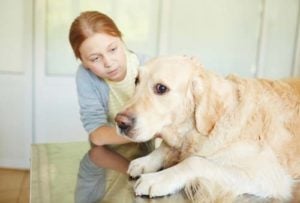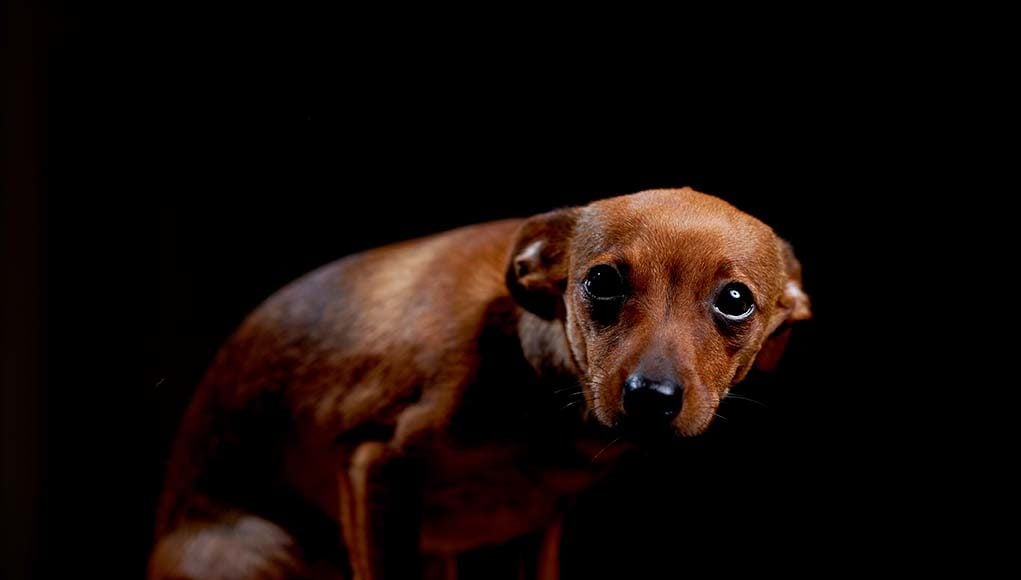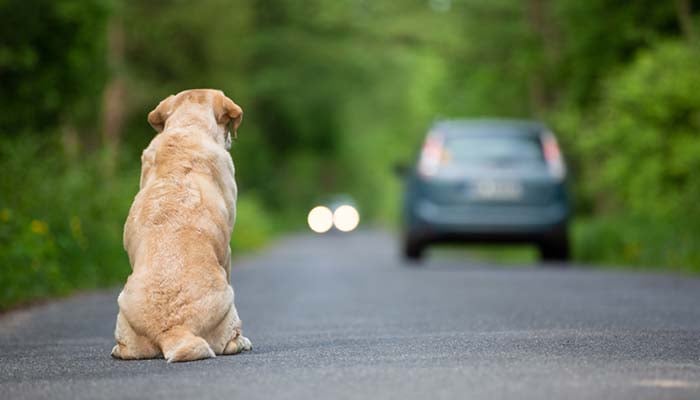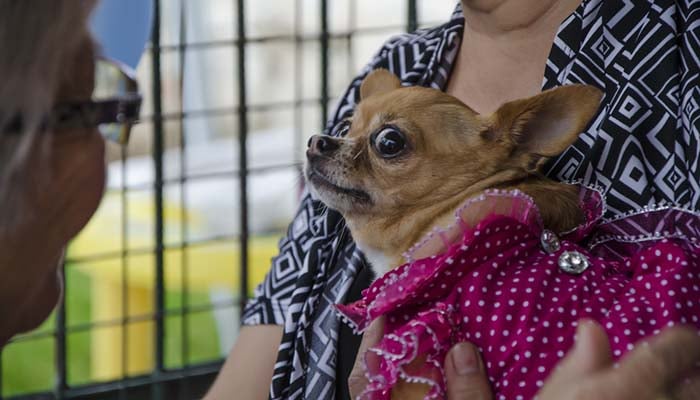Table of Contents
Dogs, similarly to people, can suffer from various fears and phobias.
Fears and phobias in dogs can stem from various sources. While dogs can be born with specific fears, most are acquired as pups begin to engage with the world.
If socialization with people and other dogs doesn’t begin when the animal is young, it is often that the dog develops phobias.
If we add a negative experience to that, chances are your pet will feel a lifelong fear of, for example, loud sounds, some objects in the surroundings, other animals, and even people.
Signs that may indicate that a dog is suffering from a specific phobia are:
- Trembling
- Hiding
- Drooling
- Squealing
- Barking
- Aggressiveness
- Destructive Behavior
10 Things Dogs Are Commonly Scared Of
Below are the 10 phobias and fears that are more common with dogs.
1. Fear of Thunder
The technical term for this specific fear is Astraphobia. In dogs, it occurs at different levels, but it can be said that no dog is indifferent to this atmospheric phenomenon.
Some pets show a milder form of fear of thunder and only tremble, lower their ears, and bend their tail under their bodies.
Other dogs that are more fearful feel the need to hide in a specific part of the house where they feel the safest, often behaving destructively in these attempts because it helps to soothe their anxiety.
Many dogs lose control over urinating and even defecation.
However, there are ways to calm your dog during a thunderstorm. This may include implementing natural remedies that will soothe the animal or using behavioral training.
2. Fear of Firecrackers
Firecrackers and fireworks can also cause fear in dogs due to their loud sound. This is no surprise since dogs have a much more developed sense of hearing than humans.
If we consider the light effects accompanying the bangs and bursts, it is not surprising that dogs quickly develop a phobia of these two things. The process of desensitizing our pets can mitigate this fear.
This fear can be so great as to cause your dog to run away from home.
And unfortunately, in the cases of some dogs, this fear is so deeply rooted that you will need to resort to serious medical attention. Make sure to consult your vet about any serious anxiety aids and doses and how to administer them.
3. Fear of Going to the Vet
There is hardly a dog who is not afraid of going to the vet. This is mainly related to the first experience associated with the veterinary clinic.
There are unusual smells, being touched and held by unknown people during an examination, getting a vaccine, and so on. Dogs remember the space in which they had an unpleasant experience.
In order to prevent this fear from even developing or reduce the level of anxiety connected with going to the vet, more frequent, sudden visits to the veterinary clinic are recommended.
These visits will not include examinations or interventions. It will simply be a social visit where the dog and the owner will feel relaxed and can “socialize” with a vet.
4. Fear of Car Rides
Even though most dogs love riding in cars, this phobia is not that uncommon.
Most often, it is related to a bad previous car-riding experience.
If the dog feels carsick and nauseous during the drive, it's probable that he will no longer want to ride in a car.
If the ride results in a visit to a veterinarian or being left at a shelter, fear is even more likely to develop and be more justified.
This fear of cars in dogs can be alleviated and also eliminated by more regular, short car rides, which will, ultimately, cause satisfaction.
If you take your dog to a new place to go for a walk or to visit a friend whom your dog loves, it will eventually stop connecting car rides with negative emotions.
5. Fear of Abandonment
Separation anxiety is another term used for fear of abandonment. In dogs, this usually occurs when they are left alone in the house.
These dogs typically show destructive behavior by ruining things and biting furniture; there is frantic barking, howling, and squealing.
Getting rid of this fear in dogs requires patience and time. It is necessary to change the amount of time you spend away from home and the amount of time the dog will be alone.
It's also recommended that you take longer walks so the dog gets tired and falls asleep before you leave. In addition, ensure that the dog has access to its favorite toy(s) or the space that your pooch usually shares with you.
6. Fear of Stairs
Many people are unaware that their dog is afraid of the stairs until he starts refusing to use them. This is pretty common as well, and these dogs should be treated with patience and should not be forced to use the stairs.
There's a proper way to teach a dog to use stairs. A game where the owner participates is an excellent way to go about this issue, too. This involves learning, literally step by step, so the dog can use the stairs without fear.
7. Fear of People
It may come as a surprise to many that a dog, a man’s best friend, is afraid of people. However, this isn’t that rare.
The cause of this fear lies in inadequate early socialization or, of course, as a result of abuse.
There are ways to solve this problem, and some of them include positive reinforcement and helping the animal feel safe.
If the fear is much too severe to resolve, contact your vet or an animal behavior specialist.
8. Fear of Strangers
Fear of strangers is very similar to being afraid of people. The only difference is that the dog is fearful of the people he doesn’t know.
Forcing a scared dog to accept an unknown person can very easily lead to a situation where the animal becomes aggressive.
9. Fear of Children
 Some dog breeds aren't fond of children, and other dogs might develop a fear of children for several reasons. The first is the lack of exposure to kids in the early stages of life.
Some dog breeds aren't fond of children, and other dogs might develop a fear of children for several reasons. The first is the lack of exposure to kids in the early stages of life.
Secondly, children behave differently towards animals.
They are not always careful and pull their ears or fur or grab the animal by the tail. Not all dogs will tolerate this behavior if they haven’t been taught to do so.
The dog essentially does not intend to hurt the child but can react aggressively because of fear. Dog owners whose pups show fear of children should consult with an expert in dog behavior.
10. Fear of Objects
Some dogs show fear of certain objects such as vacuum cleaners, hairdryers, brooms, and even toys. The list goes on.
The solution is not too complicated because we can remove these objects from the dog’s sight or take the dog to another room while we use them.
But things get complicated when the animal shows fear of, for example, a statue you have to pass by on your walks and refuses to go near it.
In such situations, nothing else remains but to slowly and patiently introduce the dog to the source of the fear. Again, this is a form of desensitization for which you do not need professional help.
Fears and phobias are not reserved for people only. Treating these conditions in dogs is much more complicated because communication is extremely limited.
It requires great persistence and patience from the owners, as well as consultations with experts. In the end, it all pays off because being a responsible owner means caring not only for the physical but also for the mental health of your pet.
READ NEXT: 15 Facts About Fear Aggression in Dogs You Must Know


















